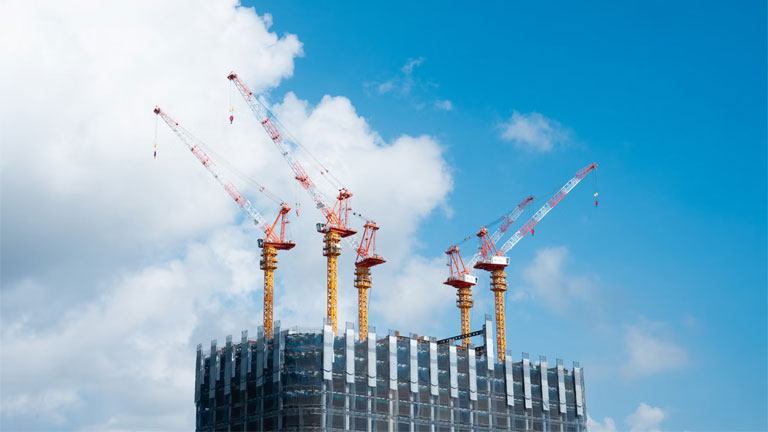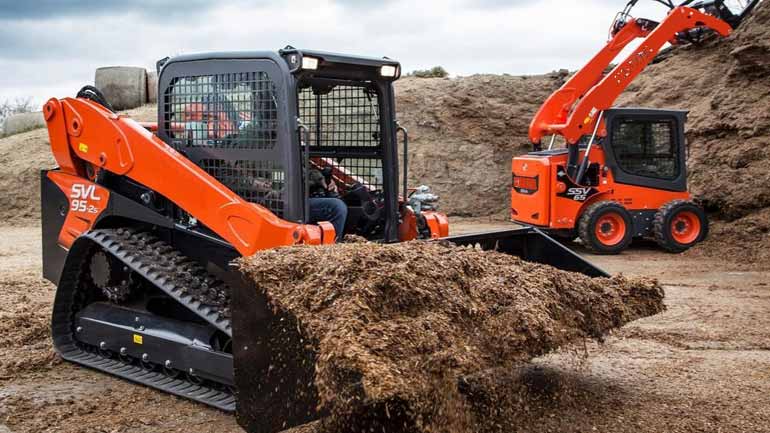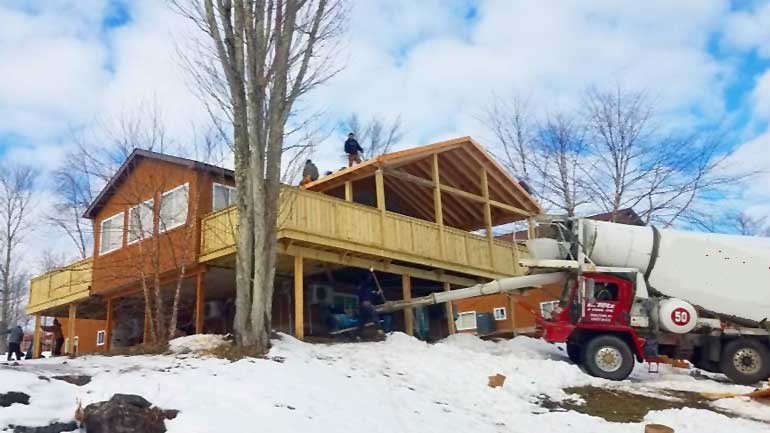
The dynamic and ever-evolving landscape of the Australian building industry is a testament to the nation’s growth and progress. Within this context, the Queensland building industry stands out as a thriving contributor to the state’s economy and urban development. Encompassing a broad spectrum of activities ranging from residential and commercial construction to infrastructure projects, the sector plays a pivotal role in shaping Queensland’s present and future. In this opinion piece, we will delve into the key facets of the Queensland building industry, exploring its significance, challenges, and prospects.
How Significant is the Queensland Building Industry?
Undoubtedly, the Queensland building industry occupies a substantial place within the state’s economic framework. According to the Queensland Government’s Department of Employment, Small Business and Training, the construction industry accounts for a significant share of the state’s Gross State Product (GSP) and employment opportunities. As of 2021, the industry’s annual GSP contribution was estimated at around $30 billion, underscoring its economic significance.
Statistics reveal that the building industry provides direct employment to approximately 230,000 Queenslanders. This figure is a testament to the sector’s role in fostering job creation and supporting livelihoods within the state.
Boom and Bust: Riding the Waves of Queensland’s Construction Cycle
Like any industry, the Queensland building sector is not immune to cyclical trends. It experiences periods of rapid expansion and growth followed by phases of consolidation and retrenchment. One factor contributing to these cycles is the interplay between government infrastructure projects, real estate demand, and economic conditions. Over the past decade, Queensland has witnessed both boom and bust periods, often influenced by factors beyond its borders.
The housing market’s susceptibility to external influences is evident in the aftermath of the global financial crisis. Following the crisis, Queensland’s construction industry faced a notable downturn due to reduced demand, with the number of dwelling approvals dropping by 46% from 2006 to 2010. However, subsequent years saw a resurgence, driven by factors like low-interest rates, population growth, and infrastructure investments.
Challenges and Considerations
While the Queensland building industry continues to chart a course of growth, it grapples with a range of challenges that warrant attention. One of the central issues pertains to the sustainability of growth and the management of associated risks. The sector’s propensity for boom-and-bust cycles underscores the need for sustainable practices and a balanced approach to development.
The challenge of maintaining a skilled workforce is another critical concern. As projects surge and wane, the availability of skilled labor can become erratic, impacting project timelines and quality. Addressing this issue requires sustained investment in training and education, encouraging young talent to consider construction-related careers.
Innovation and Adaptation: Shaping the Future
As Queensland’s building industry navigates challenges, it also embraces opportunities for innovation and adaptation. Technological advancements are reshaping the construction landscape, offering novel ways to design, plan, and execute projects. Building Information Modeling (BIM), drones, and automation are revolutionizing traditional construction methods, enhancing efficiency, safety, and precision.
Furthermore, sustainable building practices are gaining prominence. The Queensland Government’s commitment to achieving a carbon-neutral state by 2050 is influencing the industry’s approach to eco-friendly construction. Initiatives such as solar-powered developments and energy-efficient designs are becoming more commonplace.
The Urbanization Imperative: Infrastructure Development
The rapid pace of urbanization places an added impetus on Queensland’s building industry to facilitate responsible urban growth. Infrastructure development is a linchpin in this endeavor. Projects such as the Brisbane Metro and the Cross River Rail not only improve transportation but also stimulate economic activity and enhance liveability.
The Queensland Government’s infrastructure investment plans are noteworthy. The state’s commitment to a $51.8 billion infrastructure program over four years underscores the significance of construction in meeting the needs of a growing population.
Balancing Progress and Preservation: A Crucial Dilemma
Amid the fervor of development, a critical dilemma emerges: How can Queensland’s building industry strike a balance between progress and preservation? The tension between the drive for growth and the imperative of conserving the state’s natural and cultural heritage is a challenge that requires careful consideration.
One of the most contentious issues revolves around urban sprawl and its environmental impact. As cities expand outward, natural habitats can be compromised, leading to habitat loss and biodiversity decline. Solutions lie in embracing sustainable urban planning practices, designing developments that integrate with the existing environment, and safeguarding green spaces.
Community Engagement and Empowerment
Effective governance of the building industry hinges on the active involvement of the community. Engaging citizens in the decision-making process can lead to more inclusive and transparent urban development. Public consultations, participatory design approaches, and feedback mechanisms empower residents to shape their neighborhoods.
The community plays a central role in advocating for heritage preservation as well. By engaging with local historical societies, indigenous communities, and heritage experts, Queensland’s building industry can navigate the challenge of modernization while respecting the significance of historical landmarks.
The Future of Work in Construction
The emergence of new technologies is reshaping the nature of work within the Queensland building industry. Automation, artificial intelligence, and robotics have the potential to revolutionize construction processes, making them more efficient and safer. However, this shift also raises questions about the future of jobs in the sector.
As automation becomes more prevalent, there is a growing need for reskilling and upskilling the workforce. The industry must foster a culture of continuous learning to equip workers with the digital and technical skills required in the evolving landscape.
Global Impacts and Local Resilience
The interconnectedness of the global economy means that external events can reverberate within Queensland’s building industry. Supply chain disruptions, changes in international trade dynamics, and shifts in global economic conditions can influence the sector’s trajectory.
To enhance resilience, the industry should explore strategies to diversify its supply chains and sources of materials. Emphasizing local production and procurement can mitigate the risks associated with overreliance on global markets.
A Blueprint for the Future: Collaborative Planning
In envisioning the future of the Queensland building industry, collaborative planning emerges as a cornerstone. This entails fostering strong partnerships between government bodies, industry stakeholders, academia, and the community. By aligning goals, sharing expertise, and co-designing solutions, a more holistic and sustainable approach to development can be achieved.
Collaborative planning can facilitate the integration of innovative ideas, such as modular construction and smart city technologies, into the fabric of Queensland’s urban landscape. Moreover, it can ensure that development projects are not isolated endeavors but part of a cohesive vision for the state’s growth.
A Call for Sustainable Progress
As the Queensland building industry forges ahead, the clarion call for sustainable progress echoes louder than ever. The interplay between development and environmental stewardship is not just a theoretical discourse; it’s a tangible reality that demands action. Embracing sustainable practices isn’t an option; it’s an imperative that holds the key to Queensland’s future resilience and vitality.
Sustainable design and construction principles can significantly mitigate the environmental impact of the industry. Adopting energy-efficient building designs, utilizing renewable materials, and integrating green technologies into projects can contribute to reduced carbon footprints and enhanced resource efficiency.
Empowering Regional Development: Beyond the Metropolis
While Queensland’s urban centers often take the spotlight, it’s essential to remember that the building industry’s influence extends far beyond the city limits. Regional development plays a pivotal role in distributing economic opportunities and alleviating urban congestion. Investment in regional infrastructure and amenities can foster growth while preserving the distinct character of different areas.
Supporting regional innovation hubs, improving transport connections, and bolstering essential services in rural and remote areas can help curtail the urban sprawl and create more balanced development patterns.
The Nexus of Culture and Architecture
Architecture is more than just bricks and mortar; it’s a reflection of culture, identity, and history. In a rapidly evolving landscape, preserving cultural heritage becomes paramount. The Queensland building industry must find ways to seamlessly blend modernization with heritage preservation, creating spaces that pay homage to the past while embracing the future.
Adaptive reuse of historic structures, incorporating indigenous design elements, and engaging in culturally sensitive design consultations can all contribute to a built environment that resonates with the stories of the past.
An Industry for All: Diversity and Inclusion
Diversity is a driving force behind innovation and progress. Queensland’s building industry has an opportunity to be a leader in fostering diversity and inclusion. Encouraging women, indigenous communities, and individuals from diverse backgrounds to join the sector can bring fresh perspectives, skills, and talents.
Efforts to promote diversity can range from targeted recruitment initiatives to mentorship programs that offer support and guidance to underrepresented groups.
Looking Ahead: The Next Decade
As Queensland’s building industry navigates the challenges and opportunities of the present, it’s crucial to cast an eye toward the next decade. What will the industry’s landscape look like in 2030? The answer lies in its ability to embrace change, anticipate trends, and innovate.
The next decade could witness an accelerated adoption of advanced technologies like 3D printing in construction, increased utilization of sustainable and recyclable building materials, and the rise of data-driven decision-making in project planning and management.
In Your Hands: Shaping Tomorrow’s Skylines
In a world of uncertainty and rapid transformation, the Queensland building industry is a realm of possibility. It’s an arena where economic growth, environmental stewardship, cultural preservation, and social progress converge. It’s an industry shaped not only by developers, architects, and policymakers but by the entire community.
The choices you make, the values you uphold, and the aspirations you hold will collectively determine the trajectory of this industry. Queensland’s future skyline is not just the vision of planners; it’s your vision, your dreams, and your commitment to building a better tomorrow.
Crafting Queensland’s Tomorrow
In conclusion, the Queensland building industry stands as a cornerstone of the state’s progress. Its contributions to the economy, employment, and urban development are undeniable. While challenges persist, the industry’s capacity for innovation and adaptation positions it to overcome hurdles and seize opportunities. As Queensland evolves, so does its construction sector, shaping the skyline and the future.
With continued investment, collaboration, and a commitment to sustainable practices, the Queensland building industry is poised to be not only a snapshot of the present but a canvas for the state’s tomorrow.




